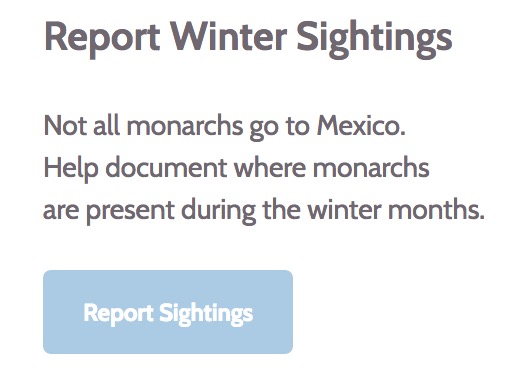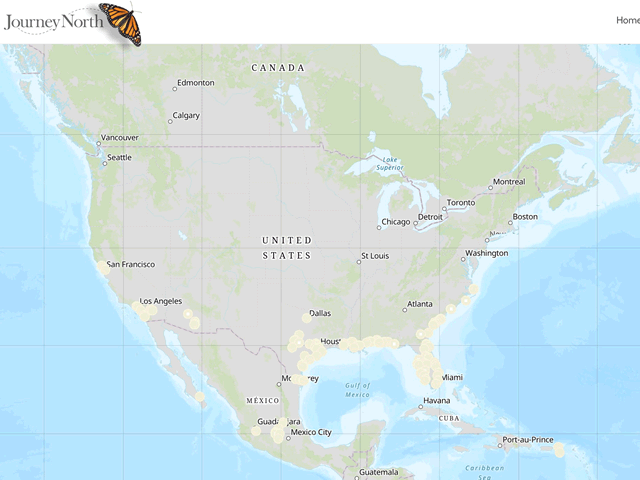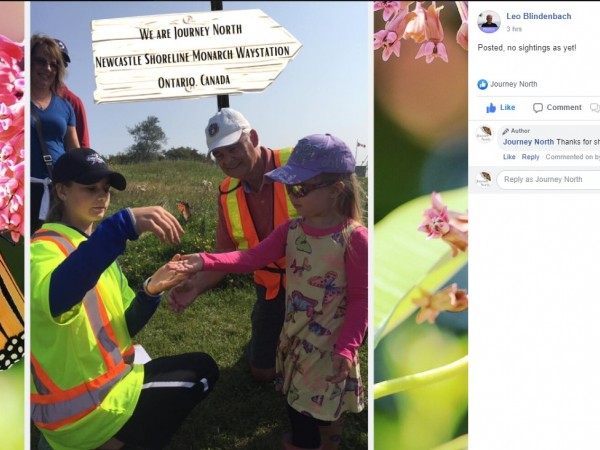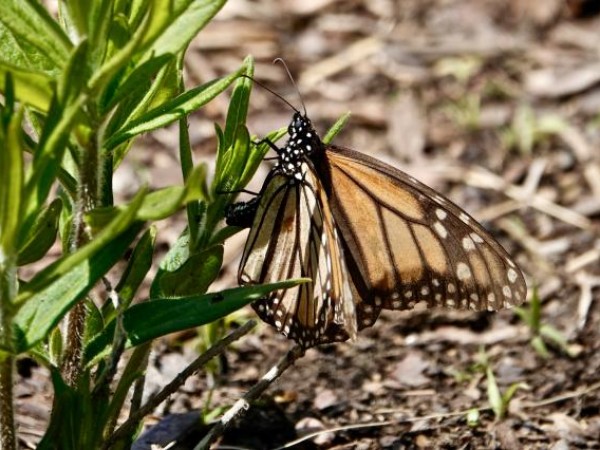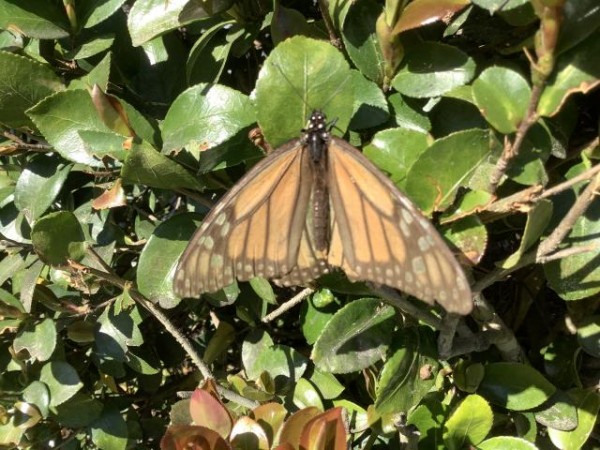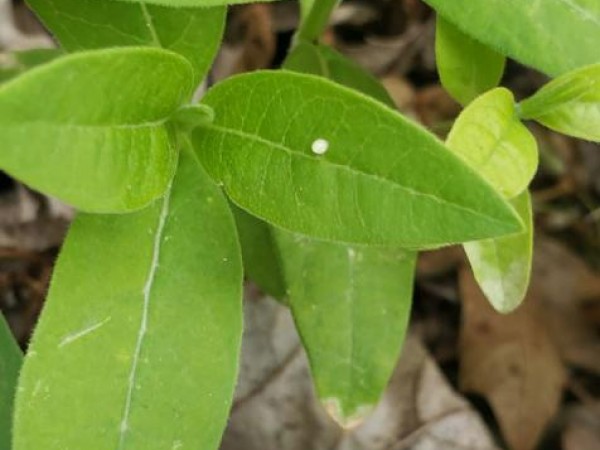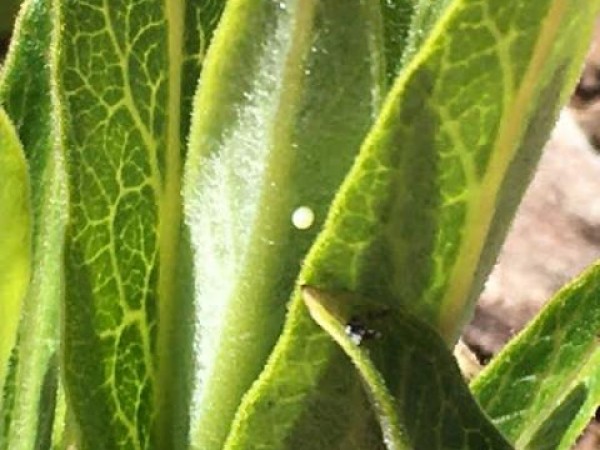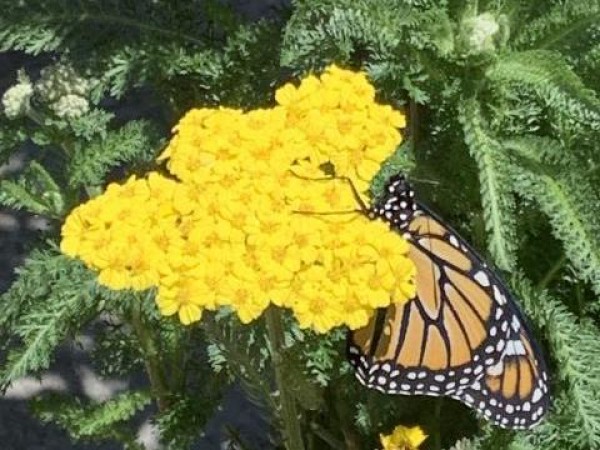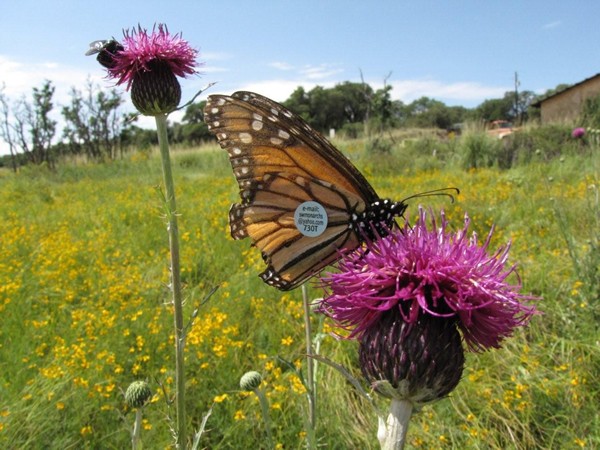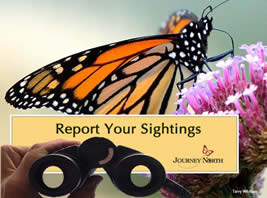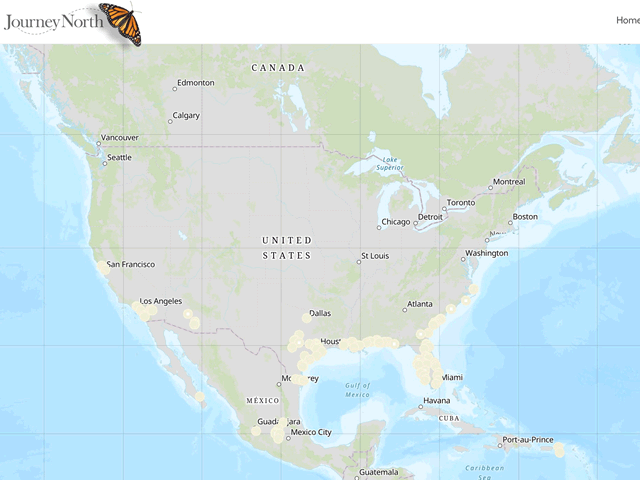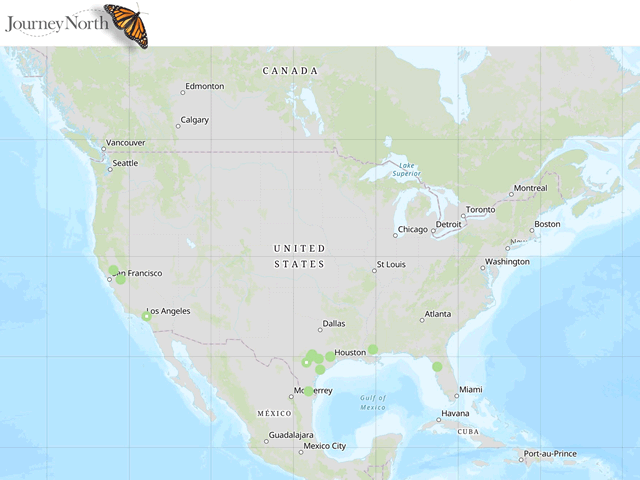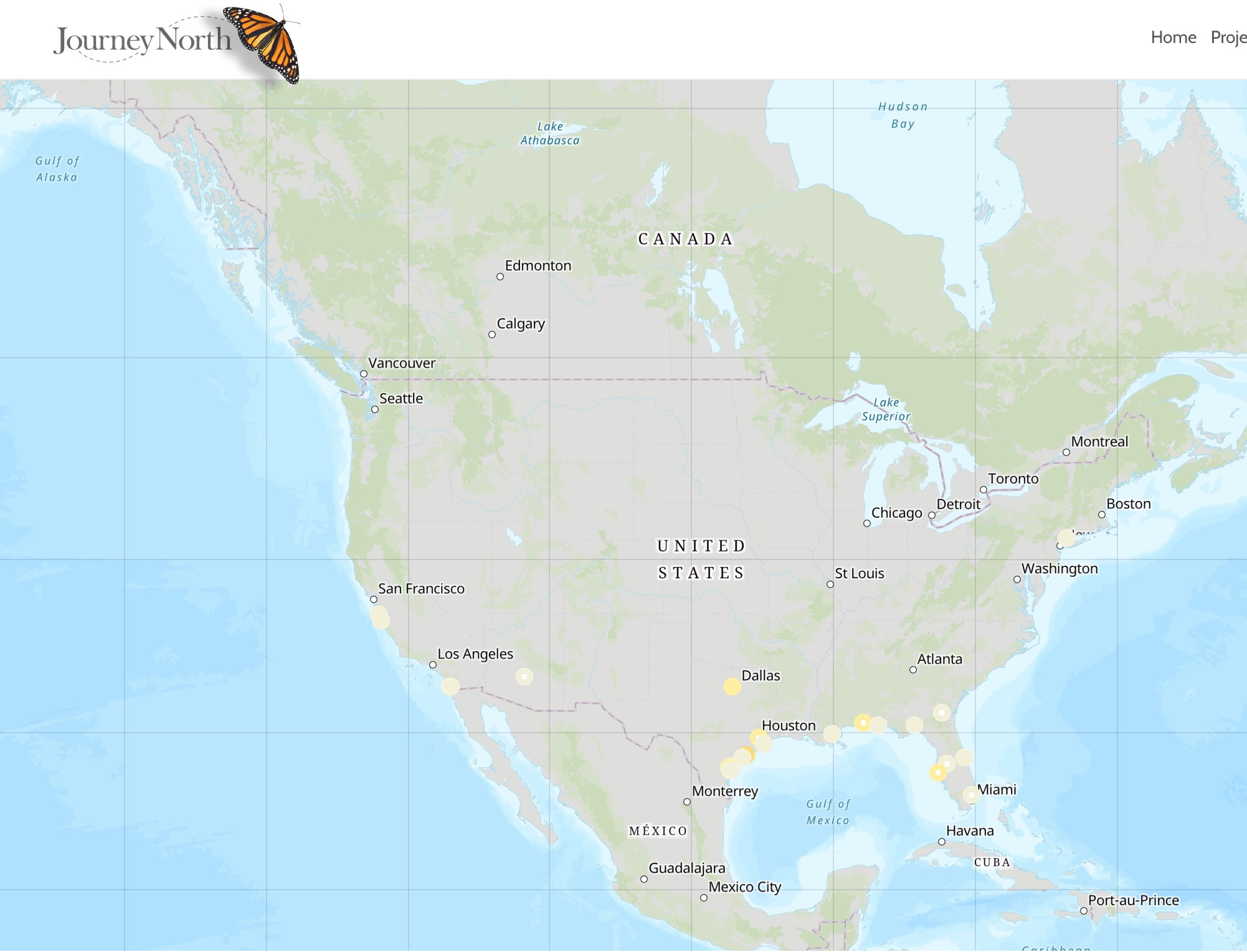Pace of Sightings Slows
This is the time of year when very few adult monarch butterflies are alive. As the monarchs from overwintering colonies fade away, we await the next generation and a surge in sightings. Be ready to observe and report.
Don't Forget To Submit Your "I am Journey North" Selfie
You have plenty of time to submit your "I am Journey North" photos. This project will run until May 31st. Newcastle Shoreline Monarch Waystation in Ontario shared this super photo for Our Community project. They are waiting for their first sighting of an adult Monarch. And another Monarch Waystation weighed in from Copperas Cove, TX. As Bill wrote: "Today, the 50'th anniversary of Earth Day, we appreciate Journey North allowing us to participate in their research as a Journey North citizen scientist. This is our second year registered as a Monarch Waystation."
The Monarch Waystation Program is run by Monarch Watch. Monarch Watch also posts informative blogs.This recent blog features Journey North data: Monarch Population Status (Monday, April 20th, 2020; by Chip Taylor)
Eastern Population of Monarchs
Monarch Migration Front Line Holding Steady at Latitude 39 degrees N
The monarch migration front line has not progressed much since our reporting from last week. There have been no sightings further north of Topeka, KS, or St. Louis, MO. Nor are adult first sightings reports coming in north of the Chesapeake Bay Area. Oklahoma continues to be a hot spot for sightings.
From Tecumseh, KS: Mary "saw a monarch flying around the garden today. Looked a little lighter color." (04/20/2020)
From Glen Allen, VA: Louise confirmed her first monarch sighting with a great photo. (04/21/2020)
From Newport News, VA: Ann, found an "adult female landed on newly planted milkweed seedlings. Faded coloring and dusty though wings in good shape. Photo on a camellia." (04/22/2020)
From Newport News, VA: From Ann, Worn looking and lacking color, adult female. Landed on my newly planted milkweed. There's a green tinge to her. Wondering if she's covered in OE and will try to capture and test if she returns. (04/22/2020)
From Enid, OK: Diane reported a monarch that appeared "very faded and very famished. Gender inconclusive but behavior was male type: inspected yard and as the sun was setting, dined and dined and dined on henbit, dead nettle, and an almost completely spent spirea shrub. Ardently stuffed face til he turned in. Definitely not a Gen1 butterfly making a short hop from Texas. Clearly came a long, long way." (04/21/2020)
Eggs and More Eggs
After a single mating, a female can lay eggs throughout her lifetime. Each butterfly lays hundreds of eggs. Because she dedicates her energies to egg-laying, the female only lives a few weeks during this stage of her life. Females are in urgent pursuit of milkweed now. It takes about one month for an egg to become an adult. However, timing varies greatly depending upon temperature. The life cycle is slowed by the cold. For example, a difference of only 10°F adds 15 days to development time as shown on the life cycle chart. The migration map shows where eggs of the next generation have been laid. It is interesting that the monarch population is at its smallest every year around Earth Day - a timely reminder to preserve habitat.
From Wichita, KS: Casey reported a "single faded female laying eggs; at least 35 found. Common and swamp milkweeds." 04/21/2020
From Springfield, MO: M. Chris submitted a sighting for a "monarch laying eggs on common milkweed in an urban garden." (04/21/2020)
Milkweed Emergence
The Journey North milkweed emergence map is "greening up." Northern most sighting are coming in from Oregon, Idaho, Michigan and Ontario.
From Boise, ID: Dave found new "sprouts emerged in my monarch garden." (04/20/2020)
From Toronto, ON: Felice reported, "First Common milkweed sprouts." (04/21/2020)
From Hillsboro, OR: Charlie shares this comment, "Our Milkweed has emerged. Unfortunately Monarch Butterflies never appear here. Milkweed was wiped out here and therefore the butterfly. It is hope they return, so we grow Milkweed and encourage others to do the same with hopes they will return." (04/18/2020)
Western Monarch Population Migration News
Gail Morris provides an update on the Western Monarch Population in her weekly report.
Western Monarchs 2020 Spring Report #8
Spring Migration Pause
Windy and warm days graced both California and Arizona where monarchs were still present this week. Remigrants have now ended their life journey but the witness of their travels will be found in the eggs and larvae further east and north in California, Arizona and even reaching southern Nevada in most years by this date. This week will bring a significant weather change as temperatures soar with a high pressure system parking over the region, driving up temperatures to reach new highs of the season.
Monarch & Milkweed Sightings
Most monarch sightings were reported in California this week. Bonnie in San Diego, California, spotted her first larva of the season on April 15: “First larvae spotted. 2 instar.”
Nancy in Ventura, California saw a monarch on her milkweed on April 19. “One monarch with [a] torn wing here for 3rd day on the same plant.”
Joyce in Mountain View, California, saw her first two monarchs of the season on April 21. “The first Monarchs have finally arrived.”
As a new generation of monarchs expand its range, an important question will be, “Is the milkweed up?” In most parts of the country, milkweed dies back in the fall and reemerges each Spring. The first signs of emerging milkweed as well as photos of full milkweed stands helps us all learn how successful monarchs will be in laying their eggs.
In the Southwest, a few species of milkweeds are evergreens – they do not die back for the Winter. Instead they flush out in new, soft growth that monarchs find each spring. Lora lives in Lake Havasu City, Arizona, near the Colorado River. Monarchs like to follow the river north each Spring and find Desert (Rush) Milkweed, Asclepias subulata, to lay their eggs. Lora writes on April 22: “I maintain two stations of five milkweed each, approximately 150 [feet] apart. Blooming is just starting the last two weeks…None seen this Spring.”
Milkweed is up and ready in Portland, Oregon, too! Steve shared on April 15, “Third year plants sprouting back up.”
April monitoring
Grab your camera and take a walk in your neighborhood and report milkweed coming up! Maybe you’ll be the lucky person to find the first eggs or larvae in your neighborhood – many Spring monarchs move through quickly and the only proof they were even there is left to discover in milkweed patches. Don’t forget to spend time each day outside in your own yard watching, too. We can still explore nature’s beauty unfolding around us this spring season.
Looking For Fun Activities To Do At Home?
Look no further! Journey North has many resources for anyone with a curious mind. This week we again feature the amazing connections between Monarchs and Milkweed.
Monarchs & Milkweed Spring / Summer Maps
After FIRST sightings, please report:
- Monarch Adult Sighted
- Milkweed Sighted
- Monarch Egg Sighted
- Monarch Larva Sighted
- Monarch (OTHER observations) *including behaviors such as mating and nectaring


